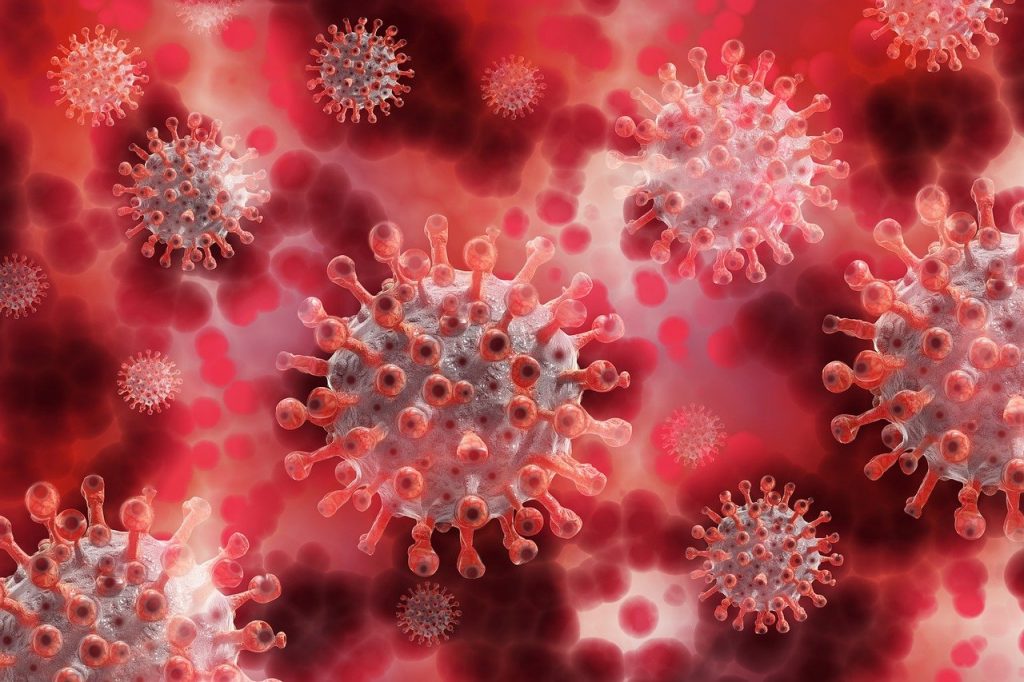Looking at the data from December, it is clear that the fourth wave of the coronavirus epidemic peaked in Hungary at the beginning of the past month. Thereafter, the virus started to gradually recede, resulting in a much more favorable epidemic situation during the holidays. However, the reduction in cases is overshadowed by the fact that Hungary still remains one of the countries most affected by covid mortality in terms of population. In addition, the heavily mutated omicron variant has also appeared in the country and its spread accelerated significantly in the second half of December.
The sharply worsening epidemiological situation of the fourth Covid wave peaked in Hungary in the very last days of November and the first days of December. On the first day of last month, 11,152 new coronavirus infections were registered in Hungary. Since then, the number of new cases has been steadily decreasing.
Despite the fact that the number of registered infections during the second wave was much lower, the course of the epidemic was very similar to last December.
At the beginning of last month, the seven-day average of new daily cases stood at 9,915 and started to gradually decline. By the end of December, this figure showed a more than threefold decrease (2,726).
Fact
Tracking the daily infection figures was made extremely difficult when a few months ago, authorities decided to simply stop publishing data on the epidemic on the weekends, and only report the combined Friday, Saturday, and Sunday figures to the public on Monday. Given the inconsistent release of data, it is therefore better to look at the seven-day moving average, which gives a closer indication of the actual trends.The subsequent positive changes then followed the usual pattern: first, the number of new infections started to decrease, then the number of people in hospitals and then those needing respiratory assistance. Finally, the number of fatalities started to decline as well, however it is still high.
Declining death toll and hospital admissions
The number of hospitalized patients, which had been rising since mid-summer, peaked on the last day of November. Since then, hospitals are reporting fewer and fewer people in need of care.
At the beginning of December, 7,546 Covid-19 patients were being treated in hospital- at the end of the month, that number halved to 3,492.
Meanwhile, the statistics on the number of people on ventilators have been severely undermined by the authorities’ changes to the rules on data reporting at the end of November, which have led to a marked improvement in the indicator (and also made it incomparable with previous data).
Nevertheless, the positive change in the number of people on ventilators is still evident. Similar to the number of patients in the hospital, the number of people who were receiving respiratory assistance also halved (from 562 to 318).
December was also the month when the number of fatalities finally started to fall significantly. After Hungary once again became the country with the worst death rate in the whole world in November, the number of fatalities started to gradually decrease from the 8th of December, as shown by the 7-day rolling averages.
In addition, the death toll seen at the end of last year is fortunately nowhere near the peak of the (so far) most devastating third wave. There were now only four days when the death toll exceeded 200, compared to the 250-300 fatalities reported for several days during the spring wave. (This is most likely thanks to vaccinations.) Despite this, Hungary unfortunately still has one of the worst statistics in terms of Covid-19 deaths in the EU, according to Oxford Univerity’s data aggregator, Our World in Data.
Hopefully, the improving trend will continue in the future, but there remains one thing that overshadows the favorable epidemic data.
Omicron variant reaches Hungary
Despite the recent deceleration of the epidemic, there is one thing preventing us from breathing a collective sigh of relief: the new virus variant, omicron.
The omicron variant was first detected by authorities in Hungary in mid-December. A lot is unclear about the new mutation of the coronavirus. Although it reportedly causes milder symptoms, it is not yet known for sure. Several countries have introduced restrictions as a precautionary measure, but the Hungarian government has no plans to do so for the time being.
One thing is certain though: similarly to other countries, it is expected to significantly increase the number of registered Covid-19 cases in Hungary.
Still mixed vaccination rate results
Similar to previous months, the vaccination rate in Hungary continues to be a mixed bag. Months ago, the country lost its leading position in the EU as the highest rate of fully inoculated population and has dropped to the bottom third with a 62% vaccination rate. However, the country fares better when it comes to booster shots. Fully 33 percent of Hungary’s population has received a third vaccine dose, closely ahead of the EU average of 29.2 percent.
Unfortunately, the emergence of omicron raises plenty of questions regarding vaccination as well. For now, it seems the third vaccine dose may be able to protect against severe symptoms caused by the new, heavily mutated variant. However, only three million people have received booster shots, while more than five million Hungarians have received a second dose of the vaccine more than four months ago. How protected they are against the virus at this point remains a question on its own, but there are almost 2.5 million people as well who have refused to get vaccinated at all.
Featured photo illustration by Zoltán Balogh/MTI



